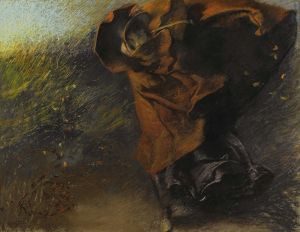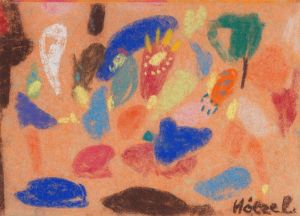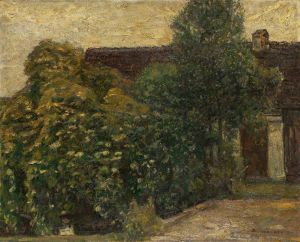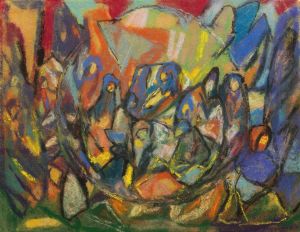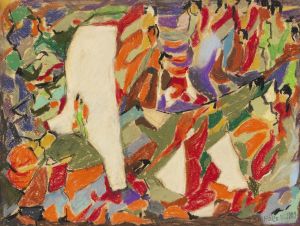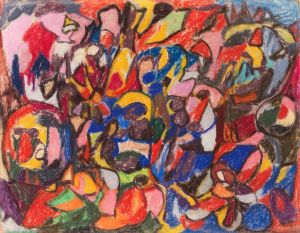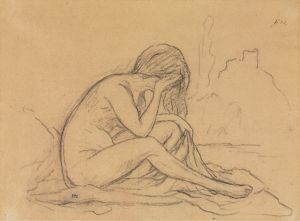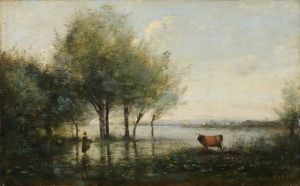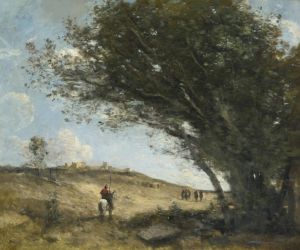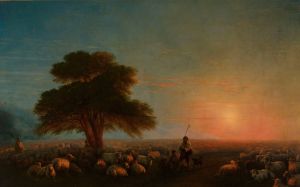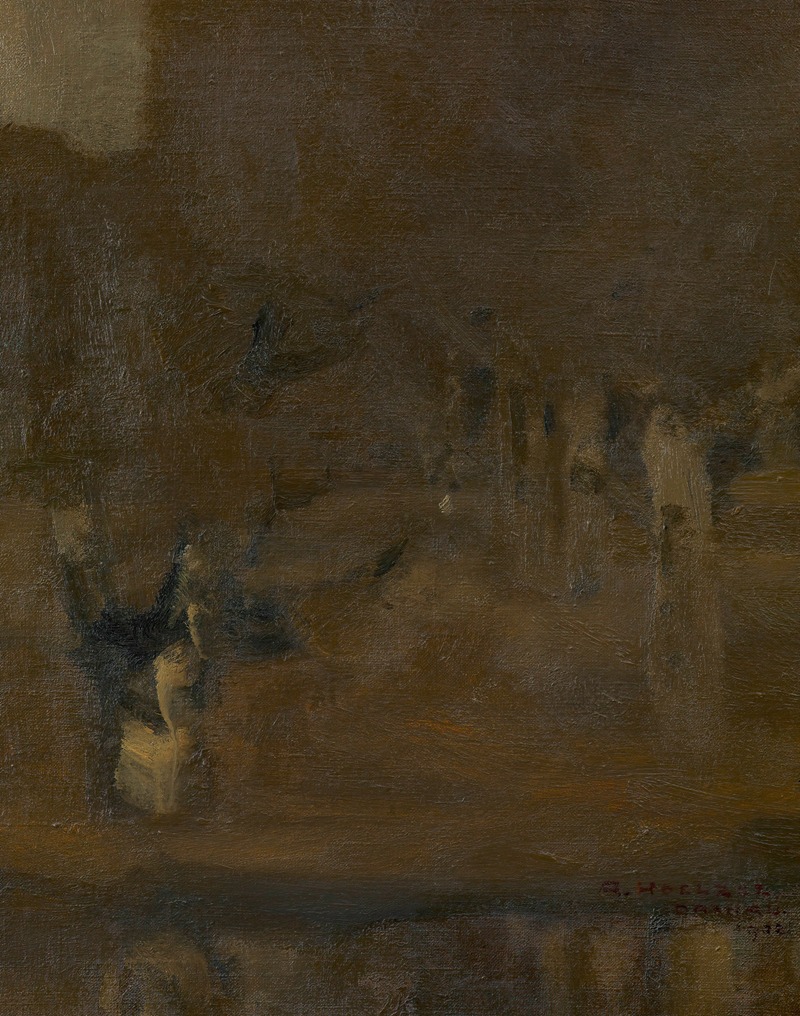
Landschaftsstudie aus Dachau
A hand-painted replica of Adolf Hölzel’s masterpiece Landschaftsstudie aus Dachau, meticulously crafted by professional artists to capture the true essence of the original. Each piece is created with museum-quality canvas and rare mineral pigments, carefully painted by experienced artists with delicate brushstrokes and rich, layered colors to perfectly recreate the texture of the original artwork. Unlike machine-printed reproductions, this hand-painted version brings the painting to life, infused with the artist’s emotions and skill in every stroke. Whether for personal collection or home decoration, it instantly elevates the artistic atmosphere of any space.
Adolf Hölzel (1853-1934) was a German painter and art teacher, known for his contributions to modern art and his role in the development of abstract art. One of his notable works is "Landschaftsstudie aus Dachau" (Landscape Study from Dachau), which reflects his innovative approach to landscape painting.
Hölzel was born in Olmütz, Moravia (now Olomouc, Czech Republic), and he studied at the Academy of Fine Arts in Vienna and the Academy of Fine Arts in Munich. He was a central figure in the Dachau art colony, an artists' community that emerged in the late 19th and early 20th centuries in the town of Dachau, near Munich. This community was known for its focus on plein air painting and its contributions to the development of modern art in Germany.
"Landschaftsstudie aus Dachau" is a prime example of Hölzel's work during his time in Dachau. The painting captures the serene and picturesque landscape of the region, characterized by its rolling hills, lush greenery, and tranquil atmosphere. Hölzel's approach to this landscape study demonstrates his interest in capturing the essence of the natural environment through a combination of realistic representation and an emerging modernist sensibility.
Hölzel's technique in "Landschaftsstudie aus Dachau" showcases his skillful use of color and light. He employs a palette that emphasizes the natural hues of the landscape, with careful attention to the interplay of light and shadow. This approach not only enhances the realism of the scene but also imbues it with a sense of mood and atmosphere. Hölzel's brushwork is both precise and expressive, allowing him to convey the textures and details of the landscape while also suggesting a sense of movement and dynamism.
In addition to his work as a painter, Hölzel was also a highly influential art teacher. He taught at the Stuttgart Academy of Fine Arts, where he mentored a number of important artists, including Oskar Schlemmer, Willi Baumeister, and Johannes Itten. Hölzel's teaching emphasized the importance of color theory, composition, and the exploration of abstract forms, which had a lasting impact on the development of modern art in Germany and beyond.
"Landschaftsstudie aus Dachau" is a testament to Hölzel's ability to bridge the gap between traditional landscape painting and the emerging trends of modernism. His work in Dachau and his contributions as a teacher helped to pave the way for future generations of artists to explore new forms of expression and to push the boundaries of artistic practice.
Overall, "Landschaftsstudie aus Dachau" by Adolf Hölzel is an important work that reflects the artist's innovative approach to landscape painting and his significant role in the development of modern art. Through his skillful use of color, light, and composition, Hölzel captures the beauty and tranquility of the Dachau landscape while also hinting at the broader artistic movements that would come to define the 20th century.





